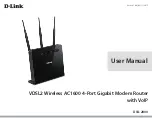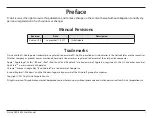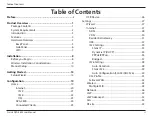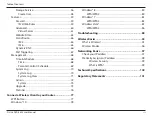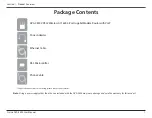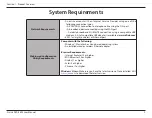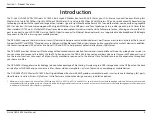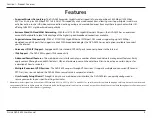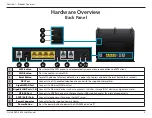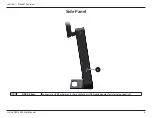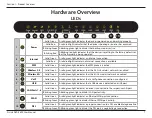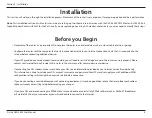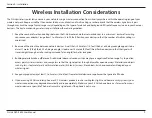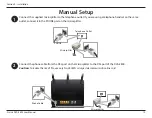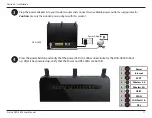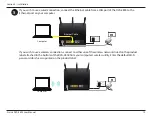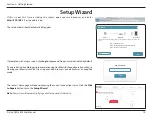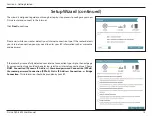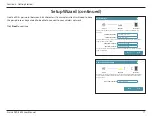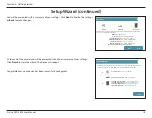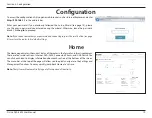
4
D-Link DVA-2800 User Manual
Section 1 - Product Overview
Features
•
Superior Wireless Networking
- The DVA-2800 provides Gigabit wireless speeds of up to a combined 1600 Mbps (1300 Mbps
802.11ac 5 GHz, plus 300 Mbps 802.11n 2.4 GHz)
1
. This capability rivals wired connections, allowing users to participate in real-time
activities online, such as HD video communication, online gaming, and use mobile devices from anywhere in your home while still
offering full 802.11n/g/b backward compatibility.
• Extreme Wired LAN and WAN Networking
- With four 10/100/1000 Gigabit Ethernet LAN ports, the DVA-2800 has an enormous
amount of bandwidth to take full advantage of the highest speed broadband connections available.
• Superior Internet Connectivity
- With a 10/100/1000 Gigabit Ethernet WAN port, DSL modem supporting up to 100 Mbps
downloads, and USB ports that support mobile 3G/4G broadband dongles, the DVA-2800 has several options available to connect
you the Internet.
• Voice over IP (VoIP) Support -
Equipped with two standard FXP VoIP ports to connect phones to the Internet.
• IPv6 Support
- The DVA-2800 supports IPv6 connectivity.
• Advanced Firewall Features
- The web-based user interface displays a number of advanced network management features. Easily
apply content filtering based on MAC address, URL, and/or domain name. Schedule these filters to be active on certain days or for
a duration of hours or minutes.
• Multiple/Concurrent VPN Sessions
- The DVA-2800 can pass through VPN sessions. It supports multiple and concurrent IPSec and
PPTP sessions, so users behind the DVA-2800 can securely access corporate networks.
• User-friendly Setup Wizard
- Through its easy-to-use web-based user interface, the DVA-2800 lets you quickly configure and
secure your router to your specific settings in minutes.
1 Maximum wireless signal rate derived from IEEE Standard 802.11a, 802.11g, 802.11n and 802.11ac specifications. Actual data throughput will vary. Network conditions and
environmental factors, including volume of network traffic, building materials and construction, and network overhead, lower actual data throughput rate. Environmental
conditions will adversely affect wireless signal range.

